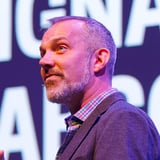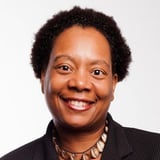Summary
Ramya and Rachel open with personal stories of early career disasters — Ramya’s Photoshop image mistakes and Rachel’s mechanical engineering prototype failure — highlighting lessons about humility, asking for help, and adapting to real-world constraints. The Federal Election Commission content redesign showcases Amanda’s team auditing 40,000 URLs to tame a sprawling, duplicative site through prioritizing early wins and understanding hard versus soft constraints. Brian recounts how a simple accessibility improvement for colorblind users unexpectedly saved his job, emphasizing the impact of inclusive design. Allison discusses her prolonged battle to unify job architectures for UX roles within a corporate HR silo, exposing organizational inertia and complexities. Anne tackles the challenge of working with know-it-all stakeholders resistant to user research, arguing that admitting ignorance and embracing inquiry improves outcomes. Sarah reveals the unsung work of the UX project manager, the essential connector coordinating users, researchers, and designers to enable smooth enterprise UX processes. Finally, Daria reflects on the ethical stakes in enterprise UX, warning against neglecting the emotional harm tools can cause clients and urging a proactive, care-driven approach to design. Together, these narratives illuminate the multifaceted nature of enterprise UX work, from technical execution and organizational navigation to ethical imperatives and human empathy.
Key Insights
-
•
Early career failures teach critical lessons about humility, thoroughness, and the importance of asking for help, as Ramya and Rachel illustrate.
-
•
Conducting a comprehensive content inventory is essential for managing sprawling enterprise websites, as Amanda's FEC project demonstrates with 40,000 URLs audited in under four weeks.
-
•
Launching small, low-risk, high-reward content updates early can build momentum, approvals, and stakeholder support in large redesigns.
-
•
Recognizing the difference between hard constraints (non-negotiable, like legal language) and soft constraints (negotiable stakeholder feedback) helps navigate complex content decisions.
-
•
Inclusive design changes such as improving iconography for colorblind users can have profound, unexpected positive impacts on users' lives and careers, as Brian’s story shows.
-
•
Organizational barriers like HR’s siloed structures and contradictory priorities can frustrate and delay essential career architecture improvements for UX professionals.
-
•
Know-it-all stakeholders who resist research often do so because they fear losing control or that past methods are insufficient, requiring tactful negotiation and empathy.
-
•
The often invisible UX project manager coordinates diverse teams, manages participant recruitment, and ensures smooth research operations crucial for enterprise UX success.
-
•
Enterprise UX tools, while solving many problems, can cause intangible emotional harm, underscoring the need to proactively consider negative impacts during design.
-
•
Strong storytelling in UX is a vital and evolving skill, useful for explaining complex processes, selling ideas, and fostering empathy across teams and stakeholders.
Notable Quotes
"I thought I had this whole being a designer thing figured out until I touched 2,000 images and saw giant black bars across all my buttons."
"The prototype caught fire because the motor and axle were misaligned — my design didn’t consider the physical realities."
"When you’re new and inexperienced, asking for help feels like admitting you don’t belong, but really, it shows wisdom."
"If you find yourself in a jungle of information, the first thing you need is a map — a thorough content inventory."
"One out of every 12 men have some form of color blindness — that was overlooked until we changed our flag icons and got tears of thanks."
"HR simplified the job hierarchy for UX, but then buried it in another job architecture project and delayed the rollout for years."
"Know-it-alls claim to know what to do and how users behave, but if they knew the answers, why bring in research?"
"The unsung hero of Enterprise UX isn’t the user or the researcher or the designer — it’s the person drowning in emails, Excel sheets, and project plans."
"We have to ask the question what if it goes wrong? Because causing even intangible, emotional pain is harm."
"I don’t want to be a troublemaker, I just want to poke holes so we can make positive outcomes for the people we serve."
Or choose a question:
















More Videos

"We have over 140,000 IBMers who’ve completed design thinking online training."
Doug PowellClosing Keynote: Design at Scale
November 8, 2018

"Sometimes with kids, you just have to get artifactual data or creative outputs because they can’t always articulate."
Mila Kuznetsova Lucy DentonHow Lessons Learned from Our Youngest Users Can Help Us Evolve our Practices
March 9, 2022

"Artifacts of the future help us envision and grasp the change that we’re hoping to have—it’s not just bullet points or vision statements."
Sarah GallimoreInspire Progress with Artifacts from the Future
November 18, 2022

"We can’t complain about not having a seat at the table if we don’t offer one of our own."
Lada Gorlenko Sharbani Dhar Sébastien Malo Rob Mitzel Ivana Ng Michal Anne RogondinoTheme 1: Discussion
January 8, 2024

"It is our job to lead and transform with empathy and heart because there’s fear in everyone."
Alnie FigueroaThe Future of Design Operations: Transforming Our Craft
September 10, 2025

"Research is not as easy as putting on a shoe and just doing it; it requires careful consideration and alignment with imperatives."
Landon BarnesAre My Research Findings Actually Meaningful?
March 10, 2022

"I thrive on learning about how people overcome obstacles."
Emily EagleCan't Rewind: Radio and Retail
June 3, 2019

"Re-platforming is transformative not just for the product but also for the people, teams, and organization."
Malini RaoLessons Learned from a 4-year Product Re-platforming Journey
June 9, 2021

"Project management was focused on outputs, assuming the correct feature was already defined."
Asia HoePartnering with Product: A Journey from Junior to Senior Design
November 29, 2023
















